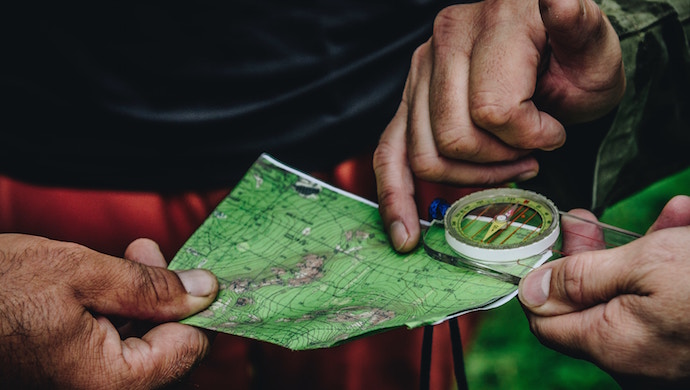Location intelligence can unlock the full potential of data
What’s a world without data? Pretty pointless, to be frank. Every part of everyday life needs data points in order for systems to function the way they should. To the unknowing eye, data points are meaningless bits of information. But when they’re collected and analyzed for what they truly represent, the world is provided with meaningful, beneficial information to move ahead.
Today, most of us probably take location-based applications for granted. But a little more than a decade ago, apps like Google Maps, Waze, or HERE were not as complete with geographical data as it is now. In fact, when you browsed most countries outside of the US, there weren’t even street names, not to mention business and geographical information.
When it comes to maps, data, and visualization thereof, enterprises require more sophistication than the run-of-the-mill GIS application. One such company that collects a wide selection of data points, analyzes, them, and provides organizations with maps and charts and other vital documentation is Esri, which then delivers the data through in such a way that communicates a visual story.
The Science of Where
In its essence, Geographical Information Systems or GIS works on providing advanced spatial analytics, data-rich mapping and visualization. It can beused for location intelligence and mapping. Esri’s geospatial cloud, for one, is used by 350,000 organizations — some of the biggest names in retail, government, and NGOs around the globe, helping unlock the full potential of data to improve operational and business results.
The platform also extends capabilities enabling users to capture spatial data, support analyses, create maps, charts and other documentation that tell a story, and allowing them to address significant challenges from supply chain management to making cities better places to live.
To illustrate the transformative power of geospatial technologies, some practical applications include alcohol consumption in different locations, and tracking an epidemic among the homeless population in San Diego. Because of this data, countless lives were saved. This only proves how vital this work is for the world as we know it.
Emergence of Findable Technology
Location intelligence can unlock the full potential of data, and Esri has recently teamed up with the XYO Network in order to amplify its capabilities through blockchain tech.
XYO’s findable technology comprises Bluetooth and GPS tracking devices, in which the network has over 1 million location beacon devices circulating in the world. This system allows every day consumers to track real-world items in real time, right from their smartphones.
It is a vast, geospatial, blockchain-powered location network that provides accurate, certainty-driven location data on everything from cars to smartphones. Using tracking devices created and sent out into the world as well as by updating existing IoT devices and mobile phones, it is an ecosystem that delivers authentic, verifiable, and trusted coordinates and data needed to execute smart contracts, run smart cities, foster financial transactions, and power a legion of high-stakes, location-centric applications. It can deliver complex, multi-layered, 3D-level location data from anywhere on the planet.
One can expect that a location-driven partnership can bring blockchain closer to the real world, particularly by enabling blockchain-based location verification functionality with spatial analytics. The XYO and Esri partnership also supports startups that build innovative solutions through the technology.
Also read: The latest AI trends you need to know
Next-Level Spatial Analysis
While mapping is not exactly new, it’s the ability to determine relative location of objects – particularly those in motion – that makes it significantly better. When paired with blockchain technology, the use-cases become more in-depth and intriguing. For example, the XYO Network will deploy location data to Esri’s ArcGIS platform, which will enhance the engine behind the map-based decision-making tool.
In practical terms, bringing blockchain tech and GIS together can impact the following industries:
- Healthtech: A combination of IoT and geographic tagging can disrupt the way patients and accident victims are managed. Its can also help determine the flow and availability of much-needed medicine.
- Disaster mitigation: Real-time tracking of vital data points during disasters can help make rescue operations and medical aid more effective.
- Wildlife conservation: Animals can be more easily tracked in the wild.
- Auto rental business: Losing keys can be very costly and time-consuming, and any business that involves keys and other such small items can benefit from being able to track these.
- Airline and airports: Lost and mishandled luggage cost airlines billions of dollars every year, not to mention millions of angry passengers. A decentralized approach to finding lost luggace, which can get multiple airports involved for more efficiency.
The most beneficial advantage of a blockchain-based approach to geospatial tech, of course, is its non-dependence on centralized technologies like GPS. As such, the location network is not vulnerable to monopolization or to single points of failure.
In an environment quickly shifting toward smart cities, real-world solutions based on blockchain will certainly make their impact.
—-
e27 publishes relevant guest contributions from the community. Share your honest opinions and expert knowledge by submitting your content here.
Photo by Daniil Silantev on Unsplash
The post Blockchain is redefining spatial analysis with real-world applications appeared first on e27.
